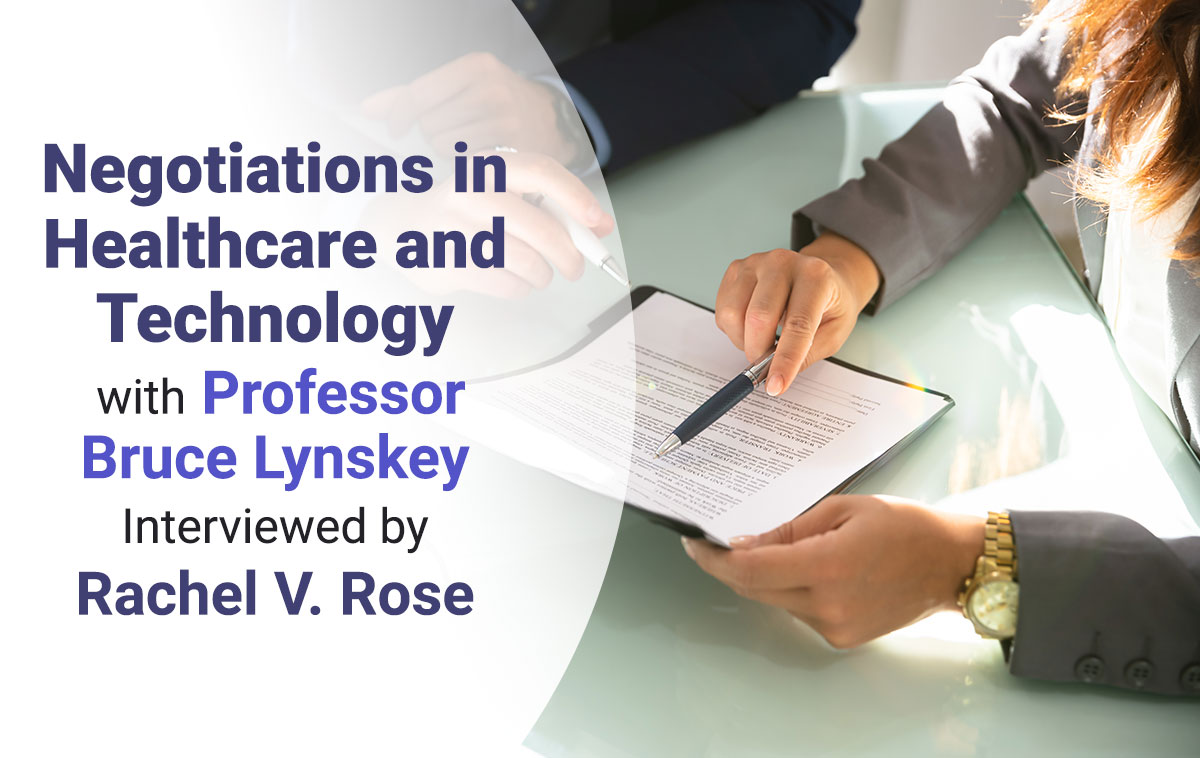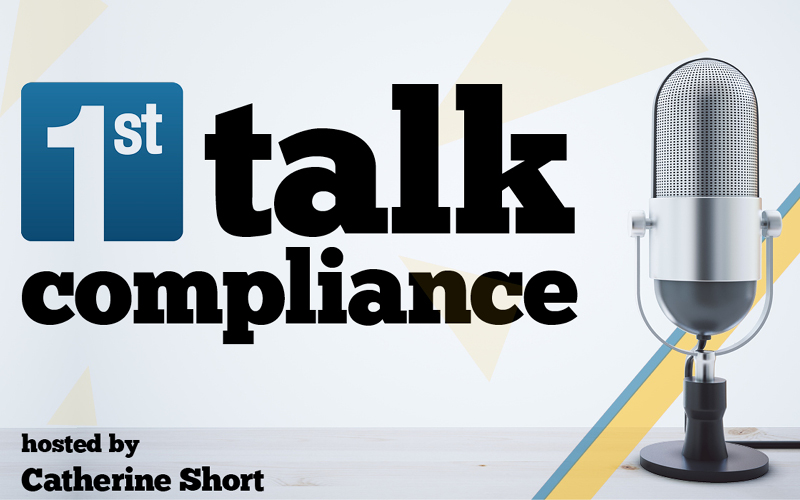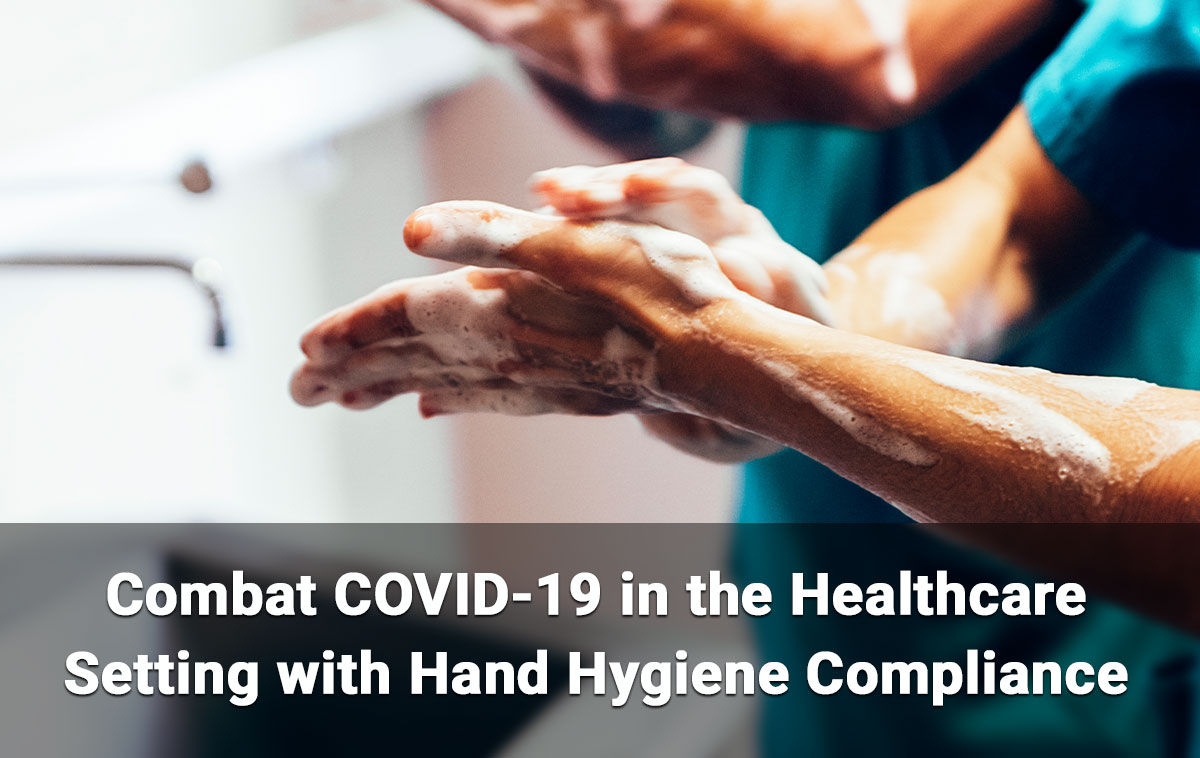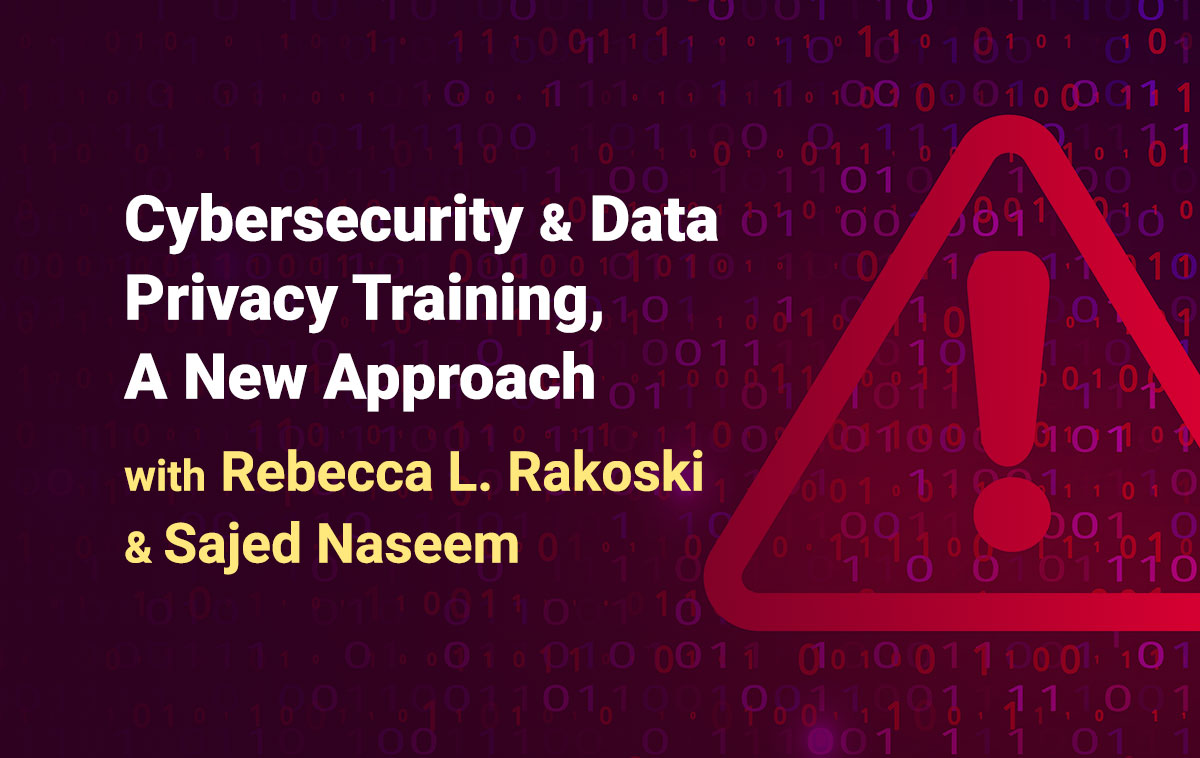Negotiations in Healthcare and Technology – An Interview with Professor Bruce Lynskey

Rachel V. Rose, JD,MBA, principal at Rachel V. Rose – Attorney at Law, PLLC (Houston, Texas) and Bruce Lynskey, Co-Founder, Director, and Chief Executive Officer at ePrevenir, will present the webinar “Negotiations in Healthcare and Technology” on September 21, 2021. The 90-minute special presentation will be worth 1.5 CEUs. In anticipation of this event, Rachel and Bruce present this valuable interview.
Overview
 Negotiating occurs in every facet of business and law. From contractual negotiations through settlement negotiations, it is a delicate dance. There are a variety of classic negotiation techniques, which include extreme posturing and “anchoring”. Healthcare and cybersecurity present unique challenges because of the looming exposure to a government investigation and either a civil and/or criminal action, even if a settlement is reached between two private parties.
Negotiating occurs in every facet of business and law. From contractual negotiations through settlement negotiations, it is a delicate dance. There are a variety of classic negotiation techniques, which include extreme posturing and “anchoring”. Healthcare and cybersecurity present unique challenges because of the looming exposure to a government investigation and either a civil and/or criminal action, even if a settlement is reached between two private parties.
In light of this landscape, what are some of the best ways to approach negotiations in the course of contractual negotiations and settlement negotiations? Expanding beyond the classic techniques, what role does psychology, empathy, macro-economic factors, and patience play?
To find practical answers to these and other questions, I reached out to a professor of mine while I was an MBA student at Vanderbilt. Bruce J. Lynskey is an accomplished business-person and academic with years of experience in a variety of roles, in both the tech industry and healthcare. I am grateful for the gift of his time, wisdom, and insights, which I hope you will find equally as valuable.
Interview
RR: Prof. Lynskey, please tell us about your background, your accomplishments, and your current endeavors.
BJL: Academically, I obtained my undergraduate degree from Bowdoin College, An MS in Applied Mathematics and another MS in Electrical Engineering both from Georgia Tech, and my MBA from Vanderbilt, during which I served as an MBA Intern in the Executive Office of the President of the United States. I co-founded and served as a member of the Board of Directors at Veran Medical Technologies, Inc., a provider of 3D navigational systems used in diagnostic or therapeutic applications in soft tissue environments. Olympus acquired Veran Medical in December 2020 for $340 million. I also served as Chief Marketing Officer at Softricity (acquired by Microsoft), Top Layer Networks (acquired by Corero), and Vigilant Networks (acquired by Gentech). I have also served as the Director of AsiaPac Marketing Operations in Singapore for Bay Networks Ltd (acquired by Nortel).
I am excited to have been asked about my current endeavors. For the last five years, I have been working with a team of people from across the world (i.e., India, UK, US) and founded a company, ePrevenir. In both Spanish and Italian, “prevenir” means to prevent. It is a cloud-based platform, which is AI based and shall be used at the primary care level with all patients diagnosed with diabetes. It has four modules to use as part of a patient’s body screening to assess disease progression and the development of any of the four comorbidities resulting from diabetes. Foot pathology, ocular (retinopathy), vascular (peripheral artery disease), and renal form the four modules.
All patients with diabetes should be screening annually for each of the four comorbidities. Fifty percent of people with diabetes will develop neuropathy. Note that neuropathy can even develop in patients diagnosed as ‘pre-diabetic’. This condition is very difficult to reverse. After a patient crosses over the threshold and develops neuropathy, diligent annual screening for each of the four comorbidities becomes critical. The primary care providers are usually the gate keepers for patients with diabetes. And, in rural areas, most primary care physicians diagnose, treat, and follow the patient for many years. Because of the lack of endocrinologists, many aspects of diabetes care may be overlooked. Our platform is an AI-driven, clinical decision support system to empower the care providers with the expertise they need to optimize their patients’ care. It provides the care providers with comprehensive analysis as well as recommended next steps for the patient. Over time our platform evolves into an expert system that provides comprehensive analysis and recommendations for the provider as well as personalized predictive analytics for the patient by fusing knowledge and data across the four comorbidities of diabetes. It will dramatically advance the quality of care provided to patients with diabetes.
Among the developed nations, the United States usually ranks last in terms of the care and management of diabetes. It ranks 17th in the world for overall quality of healthcare and first in the world for the highest cost of care as well as inefficiency of our delivery system. Historically, the United States has relied on a fee-for-service care model but with virtually no transparency. Over the past decade, there has been a shift towards value-based care and value-based programs, which reward the quality of care and patient outcomes, as well as coordination of care rather than the volume of care services provided. The culture of care in the United States is predominantly reaction based, instead of preventative care based.
Needless to say, I am in the midst of a variety of negotiations. Some good resources to utilize when preparing for negotiations include: HBS, When to Make the First Offer in Negotiations; Getting to Yes: and Psychology Today, The Psychology of Negotiation, Explained.
RR: You have negotiated a variety of deals, been involved in a variety of settlement negotiations, and conducted business worldwide. What are some important, general take-aways that you have learned from these experiences?
BJL: If one walks in to negotiate anything, then one needs to have done his/her homework beforehand. Understand what is at issue; prepare adequately; and appreciate what your most desired outcome is as well as your settlement floor. A lot of negotiations involve more than money, often times there is a system cure, an apology, and/or an emotional healing.
Having worked with a lot of entrepreneurs and attorneys, I collaboratively identify “trap doors” that can expose them to external consequences, such as litigation or a government investigation. What a person always wants to focus on is the business. The worst scenario is an external event occurs, such as a lawsuit, the business is disrupted, funding ceases, and/or the management/leadership is replaced.
RR: What is your most utilized techniques (classic or new) when approaching negotiations in healthcare or cybersecurity? Why?
BJL: Both healthcare and cybersecurity have evolved. I worked with a company that had an intrusion detection solution. They would detect attempted intrusions into the corporate network. This was back in 1997-1998. There were firms working in this space. This was a tough sell to the market. The reason was that the industry was not prevention focused. And, it remained that way for years. Fast forward to 2020, cyberattacks have become more consequential and as a result, people have become more proactive.
Before the negotiation, I gain an understanding of the two end-points – what I would like to have versus the things I must realistically have. When I go into the negotiation, I would ask for what I want, after discussing it with my attorney in order to understand what can reasonably categorized within those “wants” and the “trap doors”. The tone that I want to project is stern and reasonable. Then, I would utilize either an extreme technique (within reason) or an anchoring technique. Also, a key take-away is to always have the other person state the amount they are seeking first.
RR: Are there any key differences between negotiating in the healthcare industry and negotiating in the tech industry that you have observed?
BJL: Healthcare and the tech industries have a number of similarities. And, in light of electronic health records and the regulatory compliance requirements such as HIPAA, there is or should be an alignment of interests. As I mentioned above, proactive cybersecurity safeguards have been around for a long time. The difference now is that the tech company and the healthcare entity have aligned incentives – to protect the confidentiality, integrity, and availability of the protected health information. The worst possible result is to have data unavailable because the patients need treatment and the providers may not know what medications the person is allergic to or when his/her last dose was provided. This situation could result in a patient’s death and represents one of the biggest concerns for hospitals that are victims of ransomware attacks. Also, in light of business partner agreements, service level agreements (SLAs), and government reporting requirements, there is potential liability and costs on both parties.
RR: One often reads about the mental component of negotiations, whether it is reverse psychology, feigning boredom, appealing to emotions, false demands, genuineness, good cop/bad copy, or bullying techniques. What is your perspective and what has your reaction been to negotiating opposite unreasonable people versus people who are genuine and reasonable?
BJL: It is hard to generalize. Among unreasonable people, there are many different types along the spectrum. One classic technique is the “walk away.” The caveat is that you know beforehand that is an option. Sometimes you may need to consider the impact on clients or other business ventures, so you may be in a position to utilize this tactic. Emotion and anger have a limited role in the negotiation. You don’t want to sound rehearsed or canned. Consideration needs to be given to what can be thrown at you and the personality type with whom you are dealing.
Dealing with unreasonable people is never pleasant. First, let them know that their approach is not working. There are different ways to approach this. Attempt to use reason. “We are here to reach a solution, a resolution. In order for that to occur, we need to have a conversation.” Each party has a role. A key component is to diffuse or divorce oneself from the emotion. The way that is accomplished depends on the person on the other side.
I’ve had some tough situations where, in general, some of the toughest situations have been in Asia. Every culture approaches business and negotiations differently. The United States is the most litigious society in the world and most Americans are impatient, especially when compared to other cultures. In Asia, by way of contrast, the individuals negotiating are more patient, have a calmness, and take a long-view approach.
RR: What final words of wisdom do you have about considering external factors such as the economy, a pandemic, or cultural considerations?
BJL: Yes! One critically important factor is to understand the culture and region of the opposing party. For example, in China, nodding one’s head does not connote agreement – it’s the opposite. Also, different cultures (and different individuals for that matter) view men and women differently. Preparing, regardless of the context of the negotiation is crucial to success. Finally, appreciate what the “trap doors” or unintended consequences may be of taking a particular course of action, keep emotion out of the negotiation process, and ascertain what your ideal “win” would be (and even more importantly) what you are willing to take to settle. Litigation is expensive, could be harmful to others (including clients), and should only be used as a last resort.
Conclusion
In any negotiation or dispute resolution setting, honesty and truthfulness are paramount. So is preparation. Healthcare and the tech industry are particularly notable for regulatory considerations and the significant costs associated with cyberattacks and data breaches. Costs include not only financial harm, but also reputational harm and legal harm. By appreciating what the “best case” ask is and being reasonable in what it would take to reach an agreement, both parties can walk away content and refocus their efforts on what matters – their business and their clients.
 About the Author
About the Author
Rachel V. Rose, JD, MBA, advises clients on compliance and transactions in healthcare, cybersecurity, corporate and securities law, while representing plaintiffs in False Claims Act and Dodd-Frank whistleblower cases. She also teaches bioethics at Baylor College of Medicine in Houston. Rachel can be reached through her website, www.rvrose.com.




